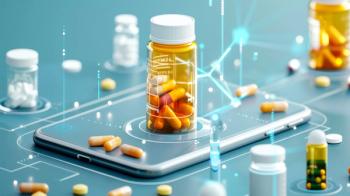
- Drug Topics February 2023
- Volume 167
- Issue 02
New Year Begins With Hikes in Drug Prices
The list prices of 450 medications have increased 5% overall, and more price hikes are expected.
This article originally appeared in Formulary Watch®, a Drug Topics® sister publication.
The median wholesale acquisition cost (WAC) for brandname drugs jumped 5% in January, and pharmaceutical manufacturers raised prices on approximately 450 medications, according to early data from 46brooklyn Research.1
“It is definitely too early to make any broad statements about how 2023 compares with prior years, as there is just so much more activity that we expect to see before the end of the month,” Antonio Ciaccia, CEO of 46brooklyn Research, told Formulary Watch®. The 450 price increases so far in January account for approximately one-quarter of the total number of increases Ciaccia expects to see throughout 2023.
So far, though, overall brand drug prices have increased at a slower rate compared with last year. The weighted overall average WAC price increase for all drugs based on Medicaid utilization thus far in 2023 is 1.3% compared with a 5.1% increase in 2022. In 2022, the median price increase was 4.9% and around 1400 medications had a price hike. This is according to 46brooklyn, a nonprofi t drug pricing research and education fi rm started by the founders of 3 Axis Advisors, of which Ciaccia is president. Also according to 46brooklyn, the biggest list price percentage increase this month was 26.8%, for iohexol solution (Omnipaque), an oral contrast medium. The biggest decline was a 70.2% drop in the list price of Amneal Pharmaceuticals’ baclofen (Lyvispah), a medication used to treat muscle stiffness and pain in people with multiple sclerosis.
“While it’s tough to pinpoint exact reasons for these types of swings, we know that Omnipaque has had a number of supply challenges2 over the past year,” Ciaccia said. “In the face of increased demand amid a prolonged period of shortages, it doesn’t surprise me that prices go up in an effort to fill the void.”
Although it’s not the largest price increase, the 5.9% list price hike on HIV therapy bictegravir, emtricitabine, and tenofovir alafenamide (Biktarvy) could have the biggest impact this year—if the rebates and discounts offered by manufacturer Gilead Sciences, Inc, don’t keep pace with the list price increases, Ciaccia explained. “A highly used drug like Biktarvy had more than $500 million in gross Medicaid spend in 2022 and more than $1.7 billion in gross Medicare spend in 2020,” he said.
Other increases in price on major medications so far include a 6% increase on Pfizer’s tofacitinib (Xeljanz) for rheumatoid arthritis and other autoimmune conditions and a 7.9% hike on palbociclib (Ibrance) and crizotinib (Xalkori) to treat cancer.
Two CAR T-cell therapies from Bristol Myers Squibb, idecabtagene vicleucel (Abecma) and lisocabtagene maraleucel (Breyanzi)—already priced high compared with other medications—had a price hike of 9% in January. This price increase, however, is the first since the launch in the first quarter of 2021 for both therapies, “bringing them to list prices comparable with other available CAR T therapies in the market,” a Bristol Myers Squibb spokesperson told Formulary Watch®.
“There were several driving factors in this decision, including the continued clinical investment, the value of these innovative therapies, the rate of inflation, and the sophisticated, personalized nature of the CAR T manufacturing process,” the spokesperson said.
Across the company’s portfolio, Bristol Myers Squibb expects United States net prices, which reflect discounts, rebates, and other price concessions, to remain largely flat in 2023, the spokesperson added. “Any list price increases apply to medicines with ongoing clinical research and reflect our ongoing efforts to responsibly price our medicines while balancing economic factors, including inflation and investment in new innovation.”
For the past 5 years, Bristol Myers Squibb has not increased list prices by more than 6% annually across its portfolio of medicines with ongoing clinical research, with the exception of its CAR T-cell portfolio, the spokesperson noted. “The complexity of delivering CAR T-cell therapies is unlike any other traditional biologic or small molecule medicine, using a patient’s own cells to start a highly sophisticated and personalized manufacturing process. Creating a personalized therapy for each patient has been incrementally impacted by inflation and other direct and indirect costs.”
A Pfizer spokesperson said the company has adjusted the average list prices of all its medicines and vaccines in 2023 around 3.6%, which is below overall inflation. “The modest increase is necessary to support investments that allow us to continue to discover and deliver new medicines as well as address increased costs throughout our business,” the spokesperson said.
“For the past 4 years, our net prices—the prices we actually receive for our medications—have fallen due to higher rebates and discounts paid to insurance companies and pharmacy benefit managers,” the Pfizer spokesperson explained. “Any increase in patient costs is likely the result of increased cost sharing, through coinsurance or deductibles, or increased use. Pfizer is dedicated to growing through expanded use of our medicines, not price increases.”
Ciaccia cautioned that WAC data do not tell the whole pricing story. “The list prices we’re examining are really the surface layer of drug pricing, and while certainly important, there is so much more to our exposure to the costs of medicines,” he noted. “The ambiguity of the actual costs of medicines is what enables the entire drug distribution channel to harvest hidden markups on prescription drug claims at the expense of plan sponsors, taxpayers, and patients. This opacity further obfuscates our ability to determine the actual value a medicine provides. The inability to objectively determine what a fair price should be for the products and services offered by drug channel participants hinders the ability for true market forces to pressure margins and promote quality and efficiency as we seek to balance drug accessibility with affordability.
References
1. This is the way…to analyze changes in brand drug list prices. 46brooklyn.
2. Thompson AB. May 16, 2022. Accessed January 9, 2022.
Articles in this issue
almost 3 years ago
Drugs to Watch: 15 Potential Blockbuster Drugs in 2023almost 3 years ago
New-Onset Autoimmune Diagnoses After COVID-19almost 3 years ago
NexoBrid for Eschar Removal in Thermal Burnsalmost 3 years ago
The Trouble With Satisfactionalmost 3 years ago
Technology Trends to Prevent Prescription Errorsalmost 3 years ago
Can Patient-Centered Prescription Labels Increase Medication Adherence?almost 3 years ago
Managing Wintertime Psoriasis Flaresalmost 3 years ago
High Demand Keeps Some Diabetes Medications in Short Supplyalmost 3 years ago
New Study Demonstrates Empagliflozin Effectiveness in Pediatric T2DNewsletter
Pharmacy practice is always changing. Stay ahead of the curve with the Drug Topics newsletter and get the latest drug information, industry trends, and patient care tips.




































































































































